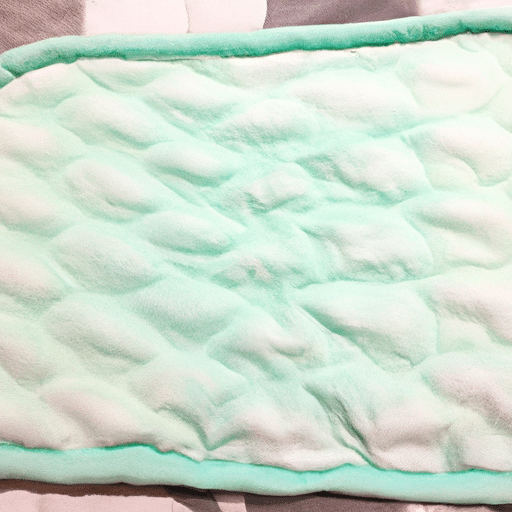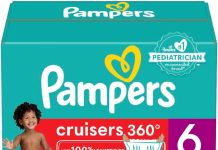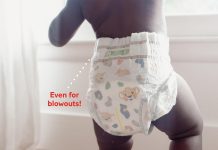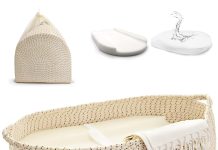When it comes to changing our little ones’ diapers, we want to ensure they’re comfortable, safe, and clean. And that’s where baby changing pads come into play! These handy accessories provide a cushioned and hygienic surface for diaper changes. However, with so many options available, it can be overwhelming to navigate the world of baby changing pads. So, let us guide you through the different types of baby changing pads so that you can make an informed decision and keep your baby happy during those diaper-changing moments.
Review contents
Disposable Baby Changing Pads
Overview of Disposable Baby Changing Pads
Disposable baby changing pads are a popular choice among parents for their convenience and ease of use. These pads are made of absorbent materials, such as paper or soft plastic, that are designed to quickly soak up any messes or spills during diaper changes. They are often available in a compact and portable size, making them perfect for on-the-go use. Disposable baby changing pads are typically meant for one-time use and can be easily disposed of after each diaper change.
Advantages of Disposable Baby Changing Pads
There are several advantages to using disposable baby changing pads. Firstly, their disposable nature eliminates the need for cleaning and washing, saving parents valuable time and effort. Parents can simply discard the used pad and replace it with a fresh one for the next diaper change. Disposable baby changing pads are also hygienic, as they provide a clean surface for each diaper change, reducing the risk of bacterial or fungal infections.
Another advantage is their portability. Disposable baby changing pads are lightweight and compact, making them easy to carry in a diaper bag or purse. This allows parents to change their baby’s diaper anytime, anywhere, without worrying about finding a clean and suitable changing surface. Whether it’s at a friend’s house, a public restroom, or even in the car, disposable baby changing pads provide a convenient solution.
Disadvantages of Disposable Baby Changing Pads
While disposable baby changing pads offer convenience, there are a few disadvantages to consider. One major concern is their environmental impact. Disposable pads contribute to the growing issue of waste and may not align with a sustainable lifestyle. Additionally, the cost of constantly purchasing disposable pads can add up over time, especially for families on a tight budget.
Another disadvantage is that disposable pads may not be as comfortable for the baby as other types of changing pads. They often lack the softness and cushioning that can be found in reusable or padded changing pads. This may not be a significant issue for quick diaper changes, but if parents are looking for a more comfortable and cozy experience for their little one, disposable pads may not be the best choice.
Reusable Baby Changing Pads
Overview of Reusable Baby Changing Pads
Reusable baby changing pads, as the name suggests, are designed to be used multiple times. These pads are usually made of soft and durable materials, such as cotton or microfiber, that can withstand repeated washing. Unlike disposable pads, reusable changing pads can be machine washed and reused, reducing waste and environmental impact.
Advantages of Reusable Baby Changing Pads
One of the main advantages of reusable baby changing pads is their eco-friendly nature. By opting for reusable pads, parents can significantly reduce their contribution to landfill waste. This can be especially important for environmentally conscious families who prioritize sustainability in their daily lives.
Another advantage is the cost-effectiveness of reusable pads. While they may have a higher upfront cost compared to disposable pads, reusable pads can save money in the long run. Instead of repeatedly purchasing disposable pads, which can add up over time, parents can invest in a few high-quality reusable pads that can be used for an extended period.
Reusable baby changing pads also often offer better comfort for the baby. The soft and plush materials used in these pads provide a cozy and cushioned surface for diaper changes. This can be particularly beneficial for newborns and infants who spend a significant amount of time lying on their backs during diaper changes.
Disadvantages of Reusable Baby Changing Pads
Despite their advantages, reusable baby changing pads may not be suitable for all parents. One disadvantage is the need for regular cleaning. Unlike disposable pads that can be simply discarded after use, reusable pads require washing and drying after each diaper change. This can be time-consuming and may not be ideal for busy parents who are constantly on the go.
Another disadvantage is the potential for staining and odor retention. Over time, reusable pads may develop stains and odors that can be difficult to remove completely, even with regular washing. This can be a concern for parents who prefer a pristine and fresh diaper changing environment.
Portable Baby Changing Pads
Overview of Portable Baby Changing Pads
Portable baby changing pads are specifically designed for convenience and ease of travel. These pads are lightweight, compact, and often come with a built-in storage compartment for diapers, wipes, and other essentials. Portable pads are designed to be folded or rolled up, allowing parents to easily carry them in a diaper bag or attach them to a stroller.
Advantages of Portable Baby Changing Pads
The main advantage of portable baby changing pads is their convenience while traveling. Whether you’re going to the park, running errands, or embarking on a family vacation, portable pads provide a dedicated changing surface wherever you are. You no longer have to worry about finding clean and suitable areas for diaper changes, as these pads offer a portable and hygienic solution.
Another advantage is the organization that portable pads offer. With built-in storage pockets or compartments, parents can keep all their diapering essentials in one place, eliminating the need to carry a separate diaper bag. This can be particularly useful for short outings or for parents who prefer a more minimalist approach when it comes to packing for their baby.
Disadvantages of Portable Baby Changing Pads
While portable baby changing pads offer convenience, there are a few disadvantages to consider. One disadvantage is their limited size. Portable pads are often smaller in dimensions compared to regular changing pads, which may not be ideal for larger babies or toddlers. It’s important to ensure that the size of the portable pad is suitable for your child’s comfort and safety.
Another disadvantage is the lack of cushioning and support. Due to their compact and lightweight design, portable pads may not provide the same level of padding and comfort as larger changing pads. This can be a concern for parents who prioritize their baby’s comfort during diaper changes.
Contoured Baby Changing Pads
Overview of Contoured Baby Changing Pads
Contoured baby changing pads are designed with raised sides to provide a secure and comfortable surface for diaper changes. These pads often have a concave shape, allowing the baby to lie in the center while preventing them from rolling or slipping off the pad. The contoured design helps to keep the baby in a safe position during diaper changes.
Advantages of Contoured Baby Changing Pads
One of the main advantages of contoured baby changing pads is the added security they provide. The raised sides help to keep the baby in place and prevent them from accidentally rolling off the pad. This can be particularly beneficial for squirmy babies who tend to move around during diaper changes.
Furthermore, the contoured shape of these pads offers a more ergonomic surface for both the baby and the caregiver. The slight incline and curvature provide a comfortable and natural position for the baby’s body, reducing strain on the caregiver’s back and shoulders during diaper changes.
Disadvantages of Contoured Baby Changing Pads
One disadvantage of contoured baby changing pads is their larger size compared to other types of pads. The raised sides and contoured shape may require more space, which can be a limitation for parents with limited room in their diaper changing area or for those who prefer smaller and more portable options.
Another potential disadvantage is the difficulty in cleaning the crevices and corners of contoured pads. These pads may have more intricate designs and additional seams, making it harder to thoroughly clean and remove any messes or spills. Regular and proper cleaning is essential to maintain hygiene and prevent bacterial growth on the pad.
Travel Baby Changing Pads
Overview of Travel Baby Changing Pads
Travel baby changing pads are specifically designed for parents who are frequently on the move. These pads are compact, lightweight, and often feature a foldable design for easy storage and portability. Travel pads are typically made of durable and wipeable materials, allowing for quick and easy cleaning.
Advantages of Travel Baby Changing Pads
The main advantage of travel baby changing pads is their convenience while traveling. These pads can be easily folded or rolled up, taking up minimal space in a diaper bag or suitcase. They provide a dedicated changing surface wherever you go, allowing you to change your baby’s diaper comfortably and hygienically.
Another advantage is the quick and easy cleaning process. Travel pads are often made of materials that can be wiped clean with a damp cloth or baby wipes. This eliminates the need for machine washing or extensive cleaning, making them ideal for situations where access to laundry facilities is limited.
Disadvantages of Travel Baby Changing Pads
While travel baby changing pads offer convenience, there are a few disadvantages to consider. One disadvantage is the lack of cushioning and padding compared to larger, non-portable changing pads. This may not provide optimal comfort for the baby during longer diaper changes.
Additionally, due to their compact size, travel pads may not be suitable for older or bigger babies who require more space for diaper changes. It’s important to consider the dimensions of the travel pad and ensure it provides adequate room for your growing child.
Waterproof Baby Changing Pads
Overview of Waterproof Baby Changing Pads
Waterproof baby changing pads are designed to protect the changing surface from leaks and spills. These pads often have a waterproof or water-resistant layer on the surface, which prevents liquids from seeping through and damaging the underlying changing area. Waterproof pads are typically made of materials such as vinyl or polyester.
Advantages of Waterproof Baby Changing Pads
The main advantage of waterproof baby changing pads is their ability to protect the changing surface from messes and accidents. The waterproof layer prevents liquids from soaking through the pad, ensuring that the changing area remains clean and dry. This can be particularly useful for parents who prefer to change their baby’s diaper on a bed or couch, as it provides an added layer of protection for the furniture.
Another advantage is the ease of cleaning. Waterproof pads can usually be wiped clean with a damp cloth or disinfectant wipes, making them quick and convenient to maintain. They are resistant to stains, odors, and moisture, ensuring a hygienic and fresh surface for each diaper change.
Disadvantages of Waterproof Baby Changing Pads
One potential disadvantage of waterproof baby changing pads is their lack of breathability. The waterproof layer may prevent air circulation and increase the likelihood of heat and sweat buildup. This can be uncomfortable for the baby, especially during diaper changes in warmer climates or during longer periods.
Additionally, some parents may be concerned about the use of synthetic materials, such as vinyl or polyester, in waterproof pads. These materials may not align with a natural or organic lifestyle and can raise environmental or health concerns for certain individuals.
Organic Baby Changing Pads
Overview of Organic Baby Changing Pads
Organic baby changing pads are made from natural materials that are free from chemicals, pesticides, and harmful dyes. These pads are often made of organic cotton, bamboo, or hemp, which are known for their softness, absorbency, and reduced environmental impact. Organic baby changing pads are a popular choice among parents who prioritize eco-friendly and toxin-free products for their little ones.
Advantages of Organic Baby Changing Pads
The main advantage of organic baby changing pads is their reduced environmental impact. Organic materials are grown and processed without the use of harmful chemicals and pesticides, making them a more sustainable choice. By opting for organic pads, parents can support environmentally friendly practices and reduce their contribution to pollution and waste.
Another advantage is the hypoallergenic nature of organic materials. Babies have delicate and sensitive skin, and exposure to synthetic materials or chemicals can sometimes lead to skin irritation and allergies. Organic pads provide a gentle and safe surface for the baby during diaper changes, minimizing the risk of skin reactions.
Disadvantages of Organic Baby Changing Pads
One potential disadvantage of organic baby changing pads is their higher cost compared to non-organic options. The use of organic materials and eco-friendly practices in manufacturing can sometimes result in a higher price tag. This can be a limitation for families on a tight budget.
Additionally, organic pads may require special care during washing to maintain their quality and integrity. Some organic materials may be more prone to shrinkage or damage if not properly cared for, which can be inconvenient for busy parents.
Padded Baby Changing Pads
Overview of Padded Baby Changing Pads
Padded baby changing pads are designed to provide extra cushioning and comfort for the baby during diaper changes. These pads often have a layer of foam or padding underneath the surface material, offering a soft and supportive surface that helps to alleviate pressure points. Padded changing pads are favored by many parents for their enhanced comfort and coziness.
Advantages of Padded Baby Changing Pads
The main advantage of padded baby changing pads is their superior comfort. The additional cushioning and padding offer a cozy and soft surface for the baby to lie on during diaper changes. This can be particularly beneficial for newborns and infants who spend a significant amount of time on their backs.
Furthermore, the padding in these changing pads helps to reduce the pressure on the baby’s delicate head and spine. The foam or padding provides gentle support and minimizes the risk of discomfort or strain during diaper changes.
Disadvantages of Padded Baby Changing Pads
One potential disadvantage of padded baby changing pads is their bulkier size compared to non-padded options. The addition of foam or padding can make these pads thicker and heavier, which may not be ideal for parents who require a more portable or compact option.
Another consideration is the maintenance and cleaning of padded pads. The foam or padding may require special care during washing, and some padded pads may not be machine washable. It’s important to follow the manufacturer’s instructions for cleaning and ensure that the pad remains in good condition.
Washable Baby Changing Pads
Overview of Washable Baby Changing Pads
Washable baby changing pads, also known as machine-washable pads, are designed to be easily cleaned and maintained. These pads are typically made of materials that can withstand regular washing in a machine, such as cotton or polyester. Washable pads offer a convenient and hygienic solution for diaper changes, as they can be quickly cleaned and reused.
Advantages of Washable Baby Changing Pads
The main advantage of washable baby changing pads is their convenience and ease of cleaning. These pads can be machine washed along with other laundry, eliminating the need for additional cleaning steps. Parents can simply toss the used pad into the washing machine and have a fresh and clean pad ready for the next diaper change.
Another advantage is the cost-effectiveness of washable pads. Instead of repeatedly purchasing disposable pads or investing in numerous reusable pads, washable pads provide a more economical option. With proper care and maintenance, washable pads can last for a long time, saving money in the long run.
Washable baby changing pads also often offer a wide range of designs and patterns, allowing parents to select options that match their personal style or nursery decor. This adds a touch of personality to the diaper changing routine and can make it a more enjoyable experience for both the baby and the caregiver.
Disadvantages of Washable Baby Changing Pads
One potential disadvantage of washable baby changing pads is the need for regular washing and drying. If parents do not have easy access to laundry facilities or find it challenging to keep up with regular laundry, washable pads may not be the most convenient option.
Additionally, repeated washing and drying can cause wear and tear on the pad over time. Some washable pads may lose their softness or absorbency after multiple washes, requiring replacement. It’s important to choose high-quality washable pads that can withstand frequent washing without compromising their functionality.
Convertible Baby Changing Pads
Overview of Convertible Baby Changing Pads
Convertible baby changing pads are designed to offer multiple functionalities beyond just diaper changing. These pads often feature additional compartments or attachments that can be utilized for storage or other purposes. Convertible pads are versatile and can be customized to suit the specific needs of parents and babies.
Advantages of Convertible Baby Changing Pads
The main advantage of convertible baby changing pads is their versatility. These pads can be transformed or adjusted to serve different purposes, making them a multi-functional accessory for parents. The additional compartments or attachments provide convenient storage for diapers, wipes, diaper cream, and other essentials, eliminating the need for a separate diaper bag.
Convertible baby changing pads can also be used beyond the diapering stage. As the baby grows older, the pad can be repurposed for other uses, such as a play mat, portable sleep surface, or even a picnic blanket. This versatility allows parents to maximize the lifespan and utility of the pad.
Disadvantages of Convertible Baby Changing Pads
One potential disadvantage of convertible baby changing pads is their bulkier size compared to regular changing pads. The additional compartments or attachments can increase the overall dimensions of the pad, which may not be ideal for parents who prioritize a more compact and portable option.
Additionally, the added functionalities and attachments may come with a higher price tag compared to standard changing pads. This can be a limitation for families on a tight budget or for those who do not require the extra features provided by a convertible pad.
In conclusion, there are various types of baby changing pads available to suit the needs and preferences of different parents. Disposable pads offer convenience and easy disposal, while reusable pads provide a sustainable and cost-effective option. Portable pads are designed for on-the-go use, while contoured pads offer added security and comfort. Waterproof pads protect against spills, while organic pads prioritize natural and eco-friendly materials. Padded pads offer enhanced comfort, while washable pads provide convenience and easy cleaning. Finally, convertible pads offer versatility and multi-functionality. By considering the advantages and disadvantages of each type, parents can make an informed decision and choose the baby changing pad that best fits their lifestyle and preferences.






























